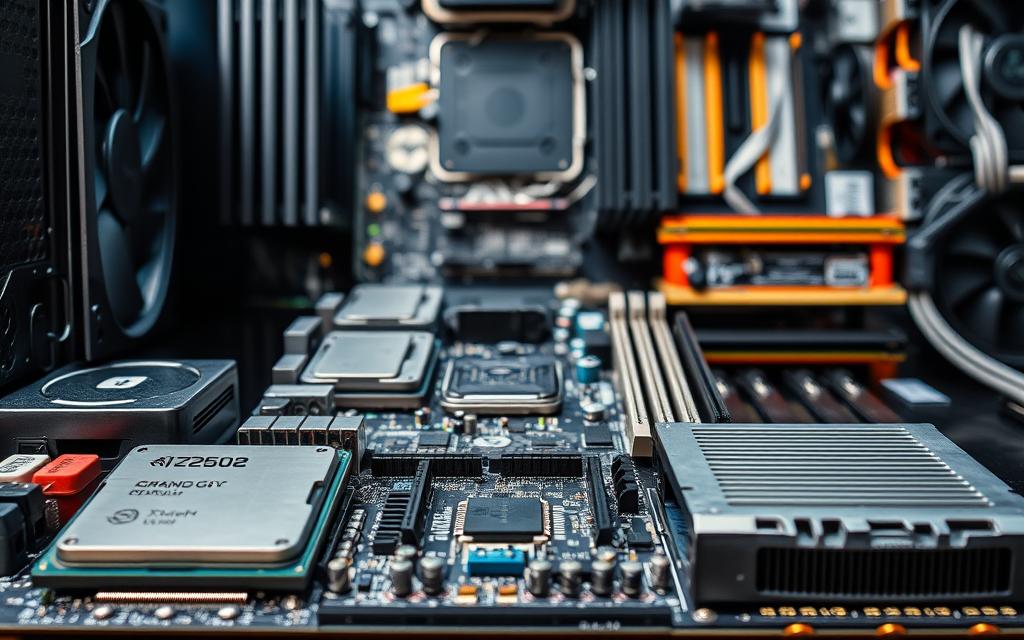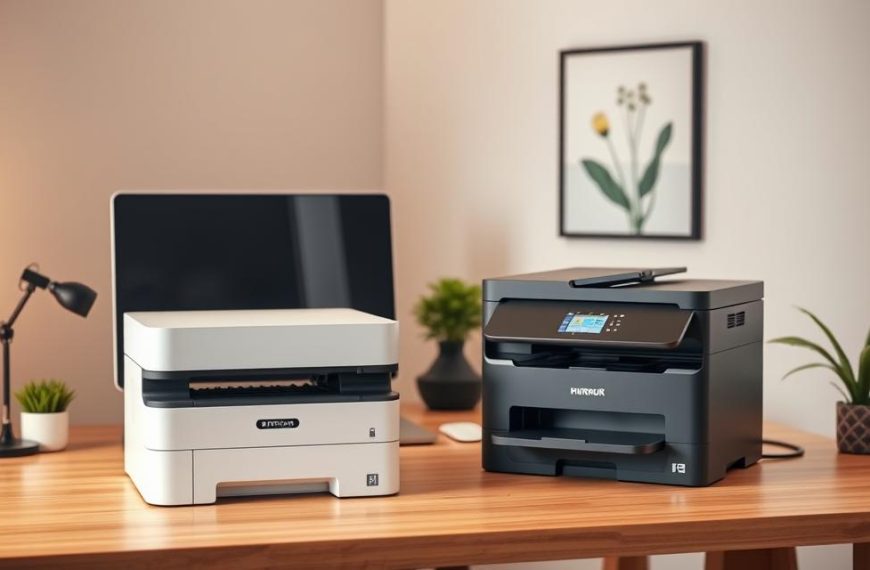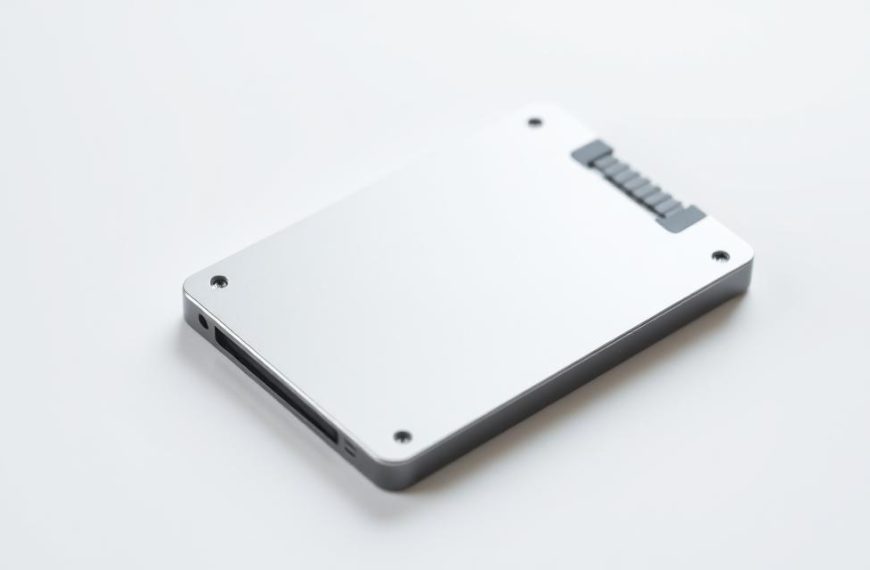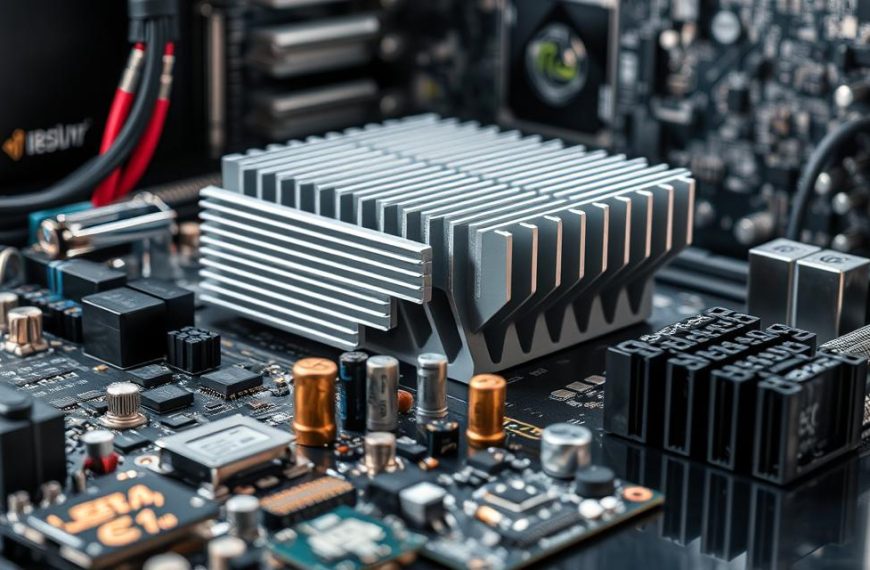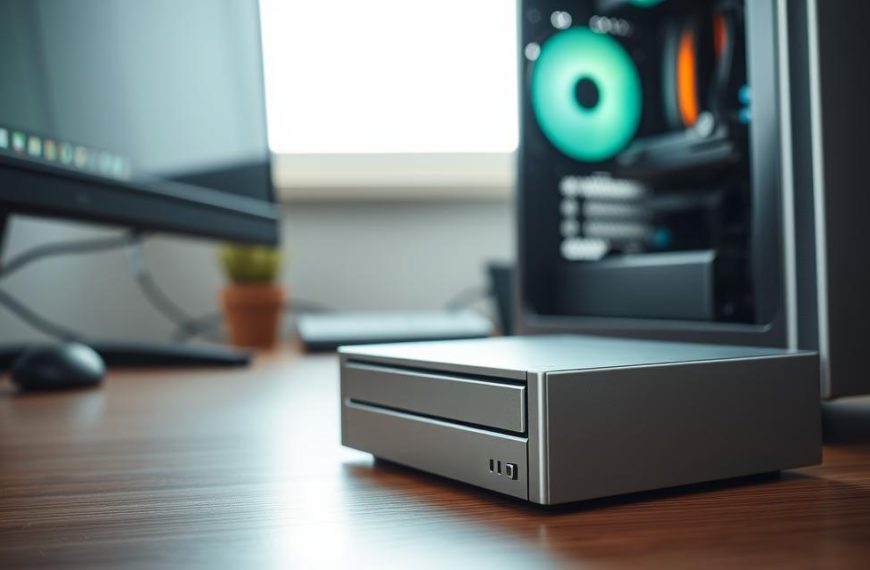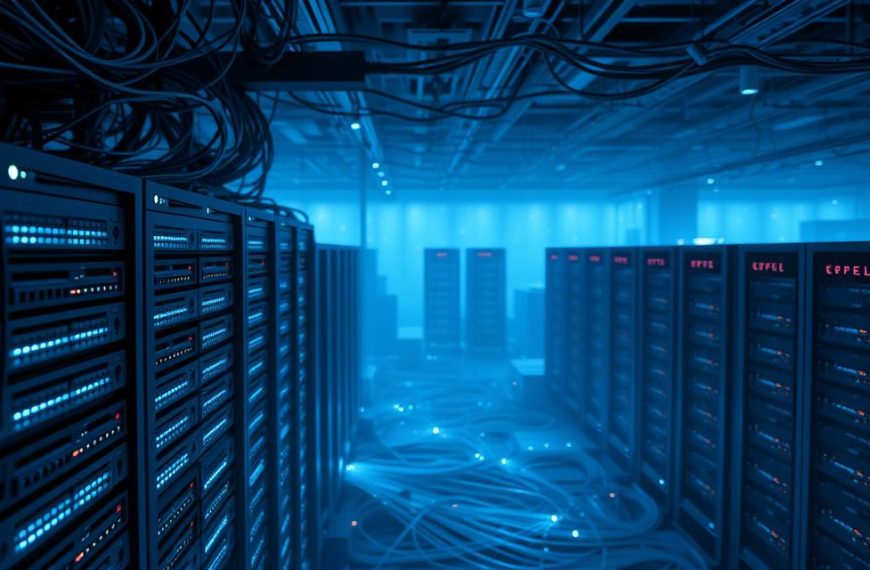At the core of every computing system lies computer hardware, the physical components that make digital operations possible. These hardware components work together to process, store, and manage data, enabling devices to perform tasks efficiently.
From the CPU handling instructions to RAM ensuring quick access to data, each part plays a vital role. Storage drives, like SSDs, keep information safe, while the motherboard connects all elements seamlessly.
Understanding these components is essential for building or upgrading systems. Modern advancements, such as Hardware as a Service (HaaS), have revolutionized how businesses and individuals access and utilize these resources.
Whether for personal use or enterprise applications, knowing the basics of computer hardware enhances decision-making and system performance. Explore more about these foundational elements here.
What is Computer Hardware? A Short Answer
The foundation of every digital device relies on physical elements. These tangible parts, known as hardware components, include circuits, chips, and cases. They work together to process, store, and manage data efficiently.
Definition of Computer Hardware
Hardware refers to the physical parts of a device, such as the motherboard, CPU, and RAM. These elements are essential for executing tasks and running programs. Without them, no system can function.
Distinction Between Hardware and Software
While hardware is tangible, software consists of intangible programs and instructions. For example, a motherboard is hardware, while Windows OS is software. Together, they enable devices to perform complex operations.
Malware often targets software, consuming memory and slowing down systems. However, it rarely affects hardware directly. For instance, a virtual keyboard on a mobile device is software, not hardware.
“Hardware is the body, and software is the mind—they must work in harmony for optimal performance.”
Data center outages, often caused by hardware failures, highlight the critical role of these components. A mismatch between hardware and software can lead to inefficiencies or system crashes.
Understanding this interdependence is crucial for building or upgrading systems. Whether for personal use or enterprise applications, knowing the basics enhances decision-making and performance.
Internal Hardware Components
Inside every system, essential elements work together to ensure smooth operations. These components are the backbone of any device, enabling it to process, store, and manage data efficiently. Let’s explore the key parts that make up the internal structure of a modern system.
Motherboard: The Central Hub
The motherboard acts as the central hub, connecting all internal parts. It houses the CPU, RAM, and other critical elements, ensuring seamless communication between them. Think of it as the orchestra conductor, coordinating every component to work in harmony.
CPU: The Brain of the System
The CPU is the brain, handling all instructions and calculations. Its speed, measured in GHz, determines how quickly it can process data. A faster CPU enhances overall performance, making it ideal for demanding tasks like gaming or video editing.
RAM: Temporary Memory Storage
RAM provides temporary storage for data currently in use. Unlike permanent storage, it is volatile, meaning it loses information when the system powers off. Faster RAM, like Crucial DDR5, improves multitasking and system responsiveness.
Storage Drives: HDD vs. SSD
Storage drives hold all your data, but they come in different types. HDDs use spinning platters, offering large capacities at lower costs. SSDs, on the other hand, use flash memory for faster speeds and better durability. NVMe SSDs, with their advanced interface, outperform traditional SATA drives.
| Feature | HDD | SSD |
|---|---|---|
| Speed | Slower | Faster |
| Durability | Less durable | More durable |
| Cost | Lower | Higher |
| Capacity | Larger | Smaller |
Heat sinks and PSUs also play crucial roles. Heat sinks manage temperature, while PSUs ensure stable power delivery. Choosing compatible components is vital for optimal performance and longevity.
External Hardware Components
Peripheral devices bridge the gap between users and their digital systems. These external elements enhance interaction, enabling efficient data input and output. From keyboards to monitors, each component plays a vital role in system functionality.
Input Devices: Keyboard, Mouse, and More
Input devices allow users to interact with their systems. Keyboards, available in ergonomic designs, ensure comfortable typing. Mice, including wireless and gaming models, offer precision with high DPI specifications. Touchpads serve as alternatives, especially in laptops.
USB flash drives provide portable storage, with USB 3.0 and 3.1 offering faster data transfer speeds. Security considerations, like encryption, protect sensitive information stored on these drives.
Output Devices: Monitors, Printers, and Speakers
Output devices deliver processed data to users. Monitors with high resolution and refresh rates enhance visual clarity, ideal for gaming and creative work. Printers, such as inkjet and laser types, cater to different printing needs.
Speakers and headphones convert digital signals into sound, enriching multimedia experiences. Graphics cards ensure smooth rendering of visuals, crucial for tasks like video editing and gaming.
Understanding these components helps users optimize their systems for better performance and efficiency.
Hardware vs. Software: How They Work Together
The synergy between hardware and software drives modern computing. These two elements, though distinct, rely on each other to perform tasks efficiently. Without hardware, software has no platform to operate. Without software, hardware remains idle, unable to execute instructions.
Complementary Roles in Computing
Hardware provides the physical foundation for computing. Components like the CPU, RAM, and storage drives handle data processing and memory management. Software, on the other hand, delivers the instructions that guide these components. For example, an operating system acts as a bridge, enabling communication between hardware and applications.
Driver software plays a critical role in this interaction. It ensures that peripheral devices, such as printers or keyboards, function seamlessly with the system. Without drivers, even the most advanced hardware would struggle to perform basic tasks.
Impact of Malware on Hardware and Software
Malware primarily targets software, exploiting vulnerabilities to disrupt operations. Ransomware, for instance, encrypts files, rendering them inaccessible until a ransom is paid. While malware rarely damages hardware directly, it can strain components by overloading the CPU or consuming excessive RAM.
Cryptocurrency mining malware is a prime example. It hijacks system resources, causing overheating and reducing the lifespan of hardware. Regular updates and antivirus programs are essential to mitigate these risks and maintain system performance.
“Hardware and software are like two sides of the same coin—they must coexist to deliver results.”
Understanding their interdependence is crucial for optimizing system efficiency. For a deeper dive into their differences, explore this comprehensive guide.
Hardware Virtualization: Abstracting Physical Resources
Modern technology has unlocked new ways to maximize system efficiency through virtualization. This process allows multiple virtual machines to run on a single physical hardware unit, optimizing resource usage and reducing costs.
Understanding Hypervisor Technology
At the core of virtualization lies the hypervisor, a software layer that manages virtual machines. There are two main types: Type 1 and Type 2. Type 1 hypervisors run directly on the hardware, offering high performance for enterprise applications. Type 2 hypervisors operate on an existing operating system, making them ideal for personal use.
Platforms like VMware and Hyper-V dominate the market, each with unique strengths. VMware excels in scalability, while Hyper-V integrates seamlessly with Windows environments. Choosing the right type depends on specific needs and workloads.
Applications in Cloud Computing
Virtualization is a cornerstone of cloud computing, enabling services like AWS and Azure to allocate resources dynamically. This flexibility allows businesses to scale up or down based on demand, ensuring optimal performance without overprovisioning.
Disaster recovery is another critical application. Virtualized environments can replicate data across multiple locations, minimizing downtime during outages. Azure’s hybrid cloud solutions further enhance this capability, blending on-premises and cloud resources for seamless operations.
“Virtualization is not just a technology; it’s a strategy for achieving efficiency and resilience in modern computing.”
GPU virtualization has also gained traction, particularly in rendering farms. By abstracting processing power, multiple users can access high-performance resources simultaneously. Load balancing techniques ensure even distribution, preventing bottlenecks and maximizing performance.
Security remains a priority in virtualized environments. Proper configuration and regular updates mitigate risks, ensuring data integrity and access control. Case studies highlight significant cost savings, making virtualization a smart investment for businesses of all sizes.
Hardware as a Service (HaaS): A Modern Approach
The way businesses manage technology is evolving rapidly, and Hardware as a Service (HaaS) is at the forefront of this transformation. This model allows organizations to access the latest hardware without the upfront costs of ownership. Instead, they pay for usage through subscription or lease agreements, ensuring flexibility and scalability.
Understanding the HaaS Model
HaaS shifts the traditional capital expenditure (Capex) model to an operational expenditure (Opex) approach. Companies no longer need to invest heavily in purchasing devices or units. Instead, they pay-as-you-go, aligning costs with actual usage. Managed Service Providers (MSPs) handle maintenance, upgrades, and decommissioning, ensuring seamless operations.
Service Level Agreements (SLAs) are a critical component of HaaS. They define uptime guarantees, response times, and support obligations. For example, MSPs ensure hardware refresh cycles keep systems up-to-date, preventing obsolescence. GDPR-compliant destruction of old devices ensures data security and regulatory compliance.
Benefits of Hardware as a Service
HaaS offers numerous advantages, particularly for businesses seeking efficiency and cost savings. By outsourcing hardware management, organizations can focus on core tasks and applications. This model also supports edge computing, where devices are deployed closer to data sources for faster processing.
Energy efficiency is another key benefit. Modern units consume less power, reducing operational costs. Failover redundancy setups ensure uninterrupted access, minimizing downtime during outages. In the healthcare sector, HaaS enables rapid deployment of critical systems, improving patient care.
“HaaS is not just a trend; it’s a strategic move toward sustainable and scalable technology management.”
Data centers are increasingly adopting HaaS to optimize resource allocation. By leveraging this model, businesses can achieve better performance and scalability while reducing their environmental footprint. Whether for small enterprises or large corporations, HaaS is reshaping how hardware is utilized in the digital age.
Essential Hardware for Building or Upgrading a PC
Building or upgrading a PC requires careful selection of key components. Each part plays a critical role in ensuring optimal performance and compatibility. From the motherboard to the power supply, understanding these elements is vital for a successful build.
Choosing the Right Motherboard
The motherboard acts as the backbone of your system, connecting all components. Consider the form factor—ATX offers more expansion slots, while microATX is compact and ideal for smaller builds. Ensure compatibility with your CPU and RAM to avoid bottlenecks.
PCIe lane allocations are another critical factor. For high-performance graphics cards or NVMe SSDs, opt for a motherboard with multiple PCIe 4.0 slots. This ensures faster data transfer and better overall performance.
Selecting a CPU and GPU
The CPU is the brain of your system, handling all processing tasks. Clock speed, measured in GHz, determines how quickly it can execute instructions. For demanding applications like gaming or video editing, a multi-core processor is essential.
Modern GPUs, like the NVIDIA RTX series, extend the CPU‘s capabilities by handling graphics and parallel processing. Whether for gaming or workstation builds, choose a GPU that matches your system‘s requirements.
Importance of a Reliable Power Supply
A stable power supply is crucial for system longevity. Calculate your unit‘s wattage requirements based on the components you plan to use. Overloading the PSU can lead to crashes or hardware damage.
Look for 80 Plus certifications, which indicate energy efficiency. Higher ratings, like Gold or Platinum, ensure better power utilization and reduced heat output. A reliable PSU also supports future upgrades, making it a smart investment.
| Component | Key Considerations |
|---|---|
| Motherboard | Form factor, PCIe slots, CPU/RAM compatibility |
| CPU | Clock speed, core count, thermal design |
| GPU | VRAM, CUDA cores, cooling solution |
| Power Supply | Wattage, 80 Plus rating, modular design |
“The right hardware choices can transform a good build into a great one—every component matters.”
Whether you’re assembling a gaming rig or a workstation, understanding these components ensures a smooth and efficient build. Tools like Crucial’s compatibility checker can help verify part compatibility, saving time and effort.
How to Identify Your Computer’s Hardware
Understanding the components of your system is key to optimizing its performance. Whether you’re troubleshooting or upgrading, knowing how to identify these parts ensures better decision-making. This section explores both software tools and physical inspection methods to help you gather detailed information about your hardware.
Using System Tools to Check Hardware Specs
Modern operating systems provide built-in tools to reveal detailed hardware specifications. On Windows, the System Information tool offers a comprehensive overview of your device, including CPU, RAM, and storage details. Linux users can utilize the lshw command for similar insights.
Third-party applications like GPU-Z and Speccy provide advanced validation and monitoring features. These tools are particularly useful for identifying components like graphics cards and ensuring compatibility with specific applications.
- Windows: System Information, DirectX Diagnostic Tool
- Linux: lshw, dmidecode
- Third-Party: GPU-Z, Speccy
Physical Inspection of Hardware Components
For a hands-on approach, physically inspecting your device can reveal valuable information. Start by checking labels and serial numbers on components like the motherboard and drive. These details can help you determine the manufacturer and model.
When opening your system, take anti-static precautions to avoid damaging sensitive parts. Look for warranty void indicators, which can affect repair options. Tools like the Crucial System Scanner can also assist in identifying memory and storage upgrades.
“A thorough inspection ensures you know exactly what’s inside your system, making upgrades and repairs more efficient.”
For enterprise environments, data center asset tagging practices can streamline hardware management. These methods ensure accurate tracking and maintenance of units across large-scale operations.
Conclusion
Effective system management relies on understanding both physical and virtual components. From the CPU to RAM, each part plays a critical role in ensuring optimal performance. Regular upgrades and maintenance are essential to keep devices running smoothly.
Virtualization and Hardware as a Service (HaaS) are transforming how businesses utilize resources. These trends offer scalability and cost-efficiency, making them ideal for modern applications. For consumers, staying informed about components like storage and memory ensures better decision-making.
Regular audits and monitoring tools help identify potential issues early. Whether for enterprise or personal use, understanding your system’s data and information flow is crucial. Start with a hardware assessment today to optimize your setup.

